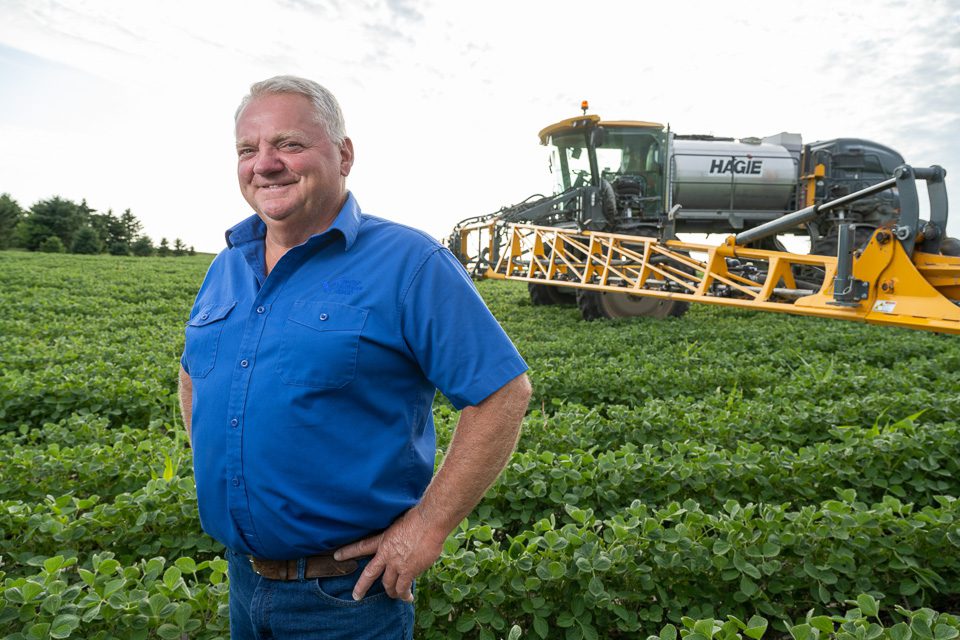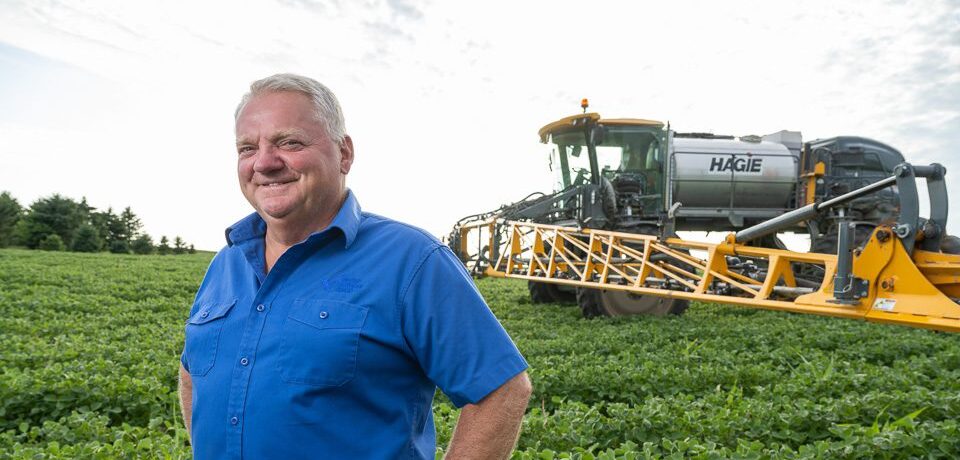Driverless cars are not yet licensed for the roads. Amazon still relies on trucks instead of drones to make deliveries. But innovations like these are on the horizon, with the goal of improving efficiency by using technology to help us do more with less.
U.S. Soy farmers already understand the need to do more with less. While raising soybeans and other crops, they need to literally cover a lot of ground — acres of fields — in limited amounts of time. Factors like weather and labor encourage farmers to embrace innovations for planting, applying inputs to nourish and protect their crops or harvesting.
“Technology is critical to farming helping farmers increase or streamline crop production, improving their sustainability,” says Jack Cornell, director of sustainable supply for the United Soybean Board. “That means innovations often show up in soybean fields before they reach the general public.”
For example, Cornell explains that farmers have been driving tractors with autosteer for more than 20 years to drive straight within the lines or rows in fields. Lane sensing technology and autosteer applications in cars, however, have become more common in just the past decade.
Autosteer tractors allow farmers to avoid overlapping rows and improves accuracy of application for fertilizer and other inputs. This translates to less waste, while allowing them to complete more quickly, or doing more with less.
“Farm equipment manufacturers continue to make progress in developing driverless, or autonomous, tractors,” Cornell says. “Such tractors may be available in just a few years, and companies are actively preparing farmers to think about how this innovation will help them better care for their crops.”
Other agricultural companies have developed the technology needed to allow drones to deliver and apply herbicides to control weeds, fungicides to fight disease or other inputs just where they are needed in fields. Some farmers use drones to scout their crops, taking pictures that show how the plants are growing and where potential problems may arise.
Artificial intelligence and machine learning will improve the ability of those drones to accurately identify specific problems, like a weed outbreak in a small area of a soybean field. Current research is developing the ability to convert that data into prescription maps that equipment like drones or sprayers can use to spot apply inputs to treat the specific problem just where it exists.
“Innovations like this make it possible for farmers to be more sustainable,” he explains. “With the help of technology, they can learn about changes or problems in their fields and act quickly in response.”
As other industries explore related innovations, like driverless cars and drone delivery, Cornell notes that lessons and experience gained in agriculture support progress.
“As availability of these innovations move closer, I encourage people to check out technology use in agriculture to gain confidence in the science behind them and the benefits they can provide,” he says.
To see another area where soybean production supports innovation, check out this video about bioengineering.

